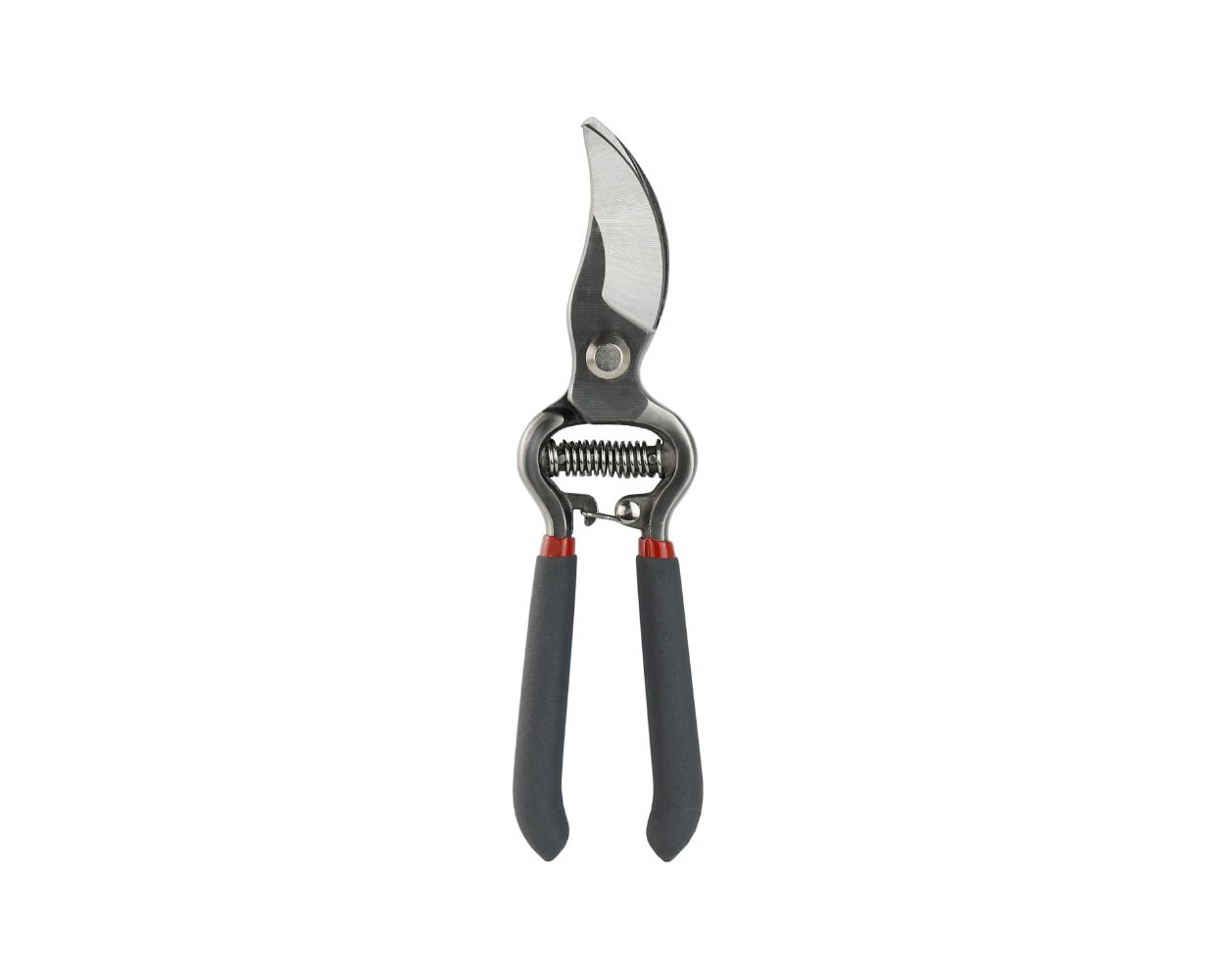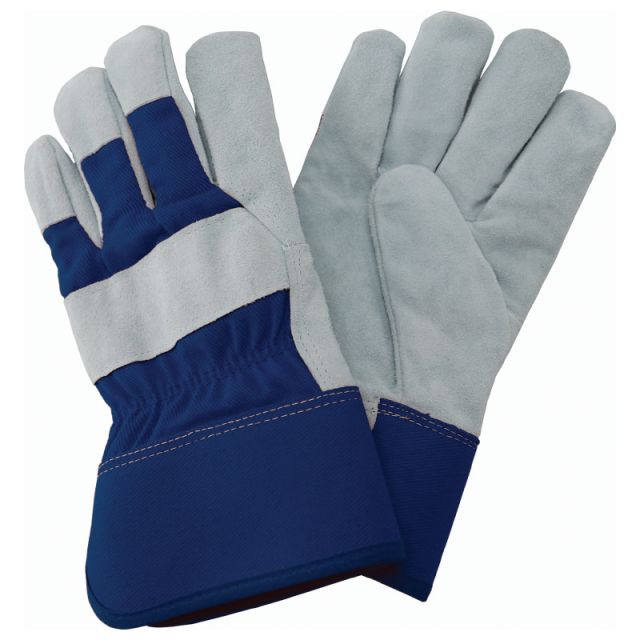Kent & Stowe Traditional Bypass Secateurs
In stock
Order in the next 00 hours, 00 minutes, 00 seconds for dispatch today.
- 5-year guarantee
- Cutting diameter of 18mm
- Drop forged carbon steel - strong and durable
- For roses, shrubs and general pruning of green live wood
Please Note: From November 1st, 2019, In accordance with the Offensive Weapons Act 2019, this product is prohibited for sale to anyone under the age of 18. Before the product is handed over, the courier will require age verification at the point of delivery. Alternatively, you can pick up in store and show your ID.
What is the Kent & Stowe Traditional Bypass Secateurs?
Kent & Stowe traditional bypass secateurs are drop forged for strength and durability. The high quality carbon steel blades are non-stick and suited to cutting delicate green stems. The bypass action is less likely to cause bruising to the stem. This tool comes with a 5 year guarantee.
These are the best secateurs for deadheading, taking cuttings, pruning and cutting shoots down to the nearest bud. Use them on roses, shrubs and for general pruning of green live wood. The secateurs have a cutting diameter of 18mm.
Why Choose The Kent & Stowe Traditional Bypass Secateurs?
Use bypass secateurs for cutting green, live wood and young soft woods. The bypass secateurs work by a single sharpened blade passing over a fixed jaw to make a clean, precise cut that will heal quicker. Adhering to best practices, correctly using bypass secateurs will avoid damaging the plant through crushing or bruising. The blade side of the pruning cut is always a little cleaner and clean cuts heal faster.
How Do I Use The Traditional Bypass Secateurs?
Use the traditional bypass secateurs to cleanly cut close to the plants stem or roots. Keep the blades in good condition by wiping them down with an oiled cloth after each use and sharpen them when necessary.
Correct use of secateurs will help your plants, shrubs and trees heal quicker after pruning.
Best Practice Using Bypass Secateurs
Some simple best practice advice:
- 1. Blade on the Inside
- 2. Size matters
- 3. Deep in the jaws
- 4. Leave the branch collar
1. Secateurs blade on the Inside
The simple rule to remember when using bypass secateurs is to keep the blade on the inside of what you're cutting. The blade side of the pruning cut is always a little cleaner and clean cuts heal faster. The non-cutting jaw will slightly crush the stem leading to bruising, keeping the cutting blade on the inside avoids the issue as the damage is on the side that gets cut off.
2. Secateurs size matters
As a general guide don't cut anything larger than diameter of your thumb with secateurs. For larger diameter branches, use a small, agile saw, like the Kent & Stowe folding saw.
3. Deep in the jaws of the secateurs
You can apply a lot more force when the branch, that you're cutting, is deep in the jaws of the secateurs. Larger diameter items, that you want to remove are easier to prune when you apply more force. Avoid using the tips of the blades for cutting wood, it takes more effort and can damage the blade. You're much better off keeping the tips clean for more delicate work, like deadheading.
4. Leave the branch collar
The branch collar is the raised ridge around where a branch attaches to the trunk or branch of the tree. Cutting above the collar allows the tree/shrub to heal quicker. Cutting below the collar can invite disease or kill some healthy wood and future buds.
How Do I Sharpen Secateurs?
In general, you'll need a fine sharpening stone to sharpen your secateurs. A long, thin stone, like the Kent & Stowe Diamond Blade Sharpener enables you to sharpen the secateurs by hand. Refer to the user instructions for the type of sharpening stone you're using.
Garden tip:
- Before using the sharpening stone, prepare it with a few drops of paraffin oil.
- For straight blades, push the sharpening stone forward across the blade on a consistent angle, moving sideways with light downward pressure.
- For a curved blade, (most bypass secateurs) push the sharpening stone forward, working around the curve of the blade on a consistent angle. Maintain sideways movement with light downward pressure as you sharpen.
- Try to maintain the same sharpening angle along the blade.
NOTES:
- For bypass secateurs, it is important to sharpen the outside blade only. Don't sharpen the inside of the blade or the bottom jaw.
- On anvil and parrot beaked secateurs you'll sharpen both sides of the blades.
| Brand | Kent & Stowe |
|---|

Our UK Mainland delivery service is provided by Parcelforce Worldwide.
NOTE: For anyone outside of the UK (i.e. Republic of Ireland and the EU) you are free to arrange your own courier service. To order from us using your own courier, complete your purchase from our website, and select "Collect from our Warehouse — Chigwell". This is where you can arrange your own courier to collect your item(s) from. Address details are available on the Contacts page.
Standard UK mainland orders over £50.00 are eligible for a free standard next working day delivery service (Mon – Fri)*.
- *Free delivery includes orders up to, and not exceeding, 30kg, that fit in a single, standard shipping box.
- *Free delivery may exclude orders containing one or more large volume items. Examples of large volume items are, but are not limited to, bags of media (clay balls, perlite, soil etc.).
- *Free delivery excludes Garden Power Tools.
- *Large items are sent via a standard 48L (48 hour large) service. Large items take from 2 working days to arrive.
Where possible, orders received by 2:30pm Mon – Fri are dispatched the same day. (*Excluding Garden Power Tools).
Where possible, Garden Power Tool orders are dispatched the same day when received by 11:00am Mon – Fri. Orders after 11:00am are usually dispatched the next working day
UK mainland orders after 2:30pm Mon - Fri are subject to next working day dispatch:
- For example, orders after 2:30pm on a Friday are dispatched on the next working day, usually a Monday.
UK Mainland Pallet deliveries are charged separately per pallet. They are usually delivered in 2-3 working days. Please contact us for the latest cost price.
Our shipping providers terms and conditions limit our ability to send some products internationally. See our list of restricted items.
All prices shown below are per parcel with a maximum weight of 30 kg per parcel. Items over 30 kg are split into multiple boxes and charged per box.
Future Garden are not liable for any additional fees that may be incurred. Any unexpected costs must be paid by you (the customer).
Delivery services provided online are estimates. There may be unforeseen delays with your order, especially around our busiest time of year. Very busy periods can see very high volumes of parcels being collected, processed and delivered. If you have a special delivery requirement, please contact us via email - info@futuregarden.co.uk before placing your order.
UK Mainland
| Standard Next Working Day (Orders over £50 <30 kg) | FREE |
| Standard Next Working Day (Orders under £50 max. 30 kg per parcel)* | £6.95 |
| Standard 2-3 Working Day (Orders under £50 max. 30 kg per parcel)* | £4.95 |
| Pallet Delivery | £70.00 |
Isle of Wight
| Next Day Service | £8.95 |
Northern Ireland
| Two Day Service | £18.95 |
Isle of Man & Scilly Isles
| Two Day Service | £20.95 |
Scottish Highlands & Islands
| Two Day Service | £16.95 |
International
Sorry, no online quotes are available for orders outside of Europe. If you would like to place an order for delivery outside of Europe, email us directly and we can prepare a bespoke quote for you based on the weight, dimensions and destination country for the most accurate cost and quickest delivery times to you.
As per the Consumer Contract Regulations June 2014, you can return goods and receive a full refund under the following conditions:
- You have had the goods delivered within seven working days of delivery from Future Garden Ltd, this starts from the day after the goods have been signed for.
- The items are unopened and in the original condition as when they were delivered to you.
or
- The items have developed a fault during standard use.
- The items are within the manufacturer's warranty period.
Simple checks
- Please ensure that any parcels delivered are intact and free from damage and unopened, if they appear to show any damage please make a note when signing for the goods, alternatively you can refuse delivery of these items, however only full refusal if multiple parcels will be accepted, in the unlikely event this occurs please contact us asap on 020 8502 7722 or by email info@futuregarden.co.uk.
- Please check all items once unboxed to ensure that they are not damaged and are fully functioning, if this is not the case please ensure you notify us as soon as you can, or within the given returns policy time frame, on 020 8502 7722 or by email info@futuregarden.co.uk we will then arrange suitable collection and replacements where necessary.
- If any items appear not to be functioning as expected, do not attempt to fix or tamper with any products, this could affect your statutory rights, please notify us on 020 8502 7722 or by email info@futuregarden.co.uk and we will arrange a suitable replacement.
- If you notice any irregularities with your order, please notify us as soon as possible or within 7 working days, on 020 8502 7722 or by email info@futuregarden.co.ukwe will endeavour to correct and refund where possible.
- You can return any unwanted items, you can return the item(s) to us unopened and intact in a re-sellable condition within 14 working days after the day of receiving the goods, we are unable to accept any goods back that have been opened or the seal(s) have been broken or have been damaged, unless reported as damaged in transit, you can contact us on 020 8502 7722 or by email info@futuregarden.co.uk





